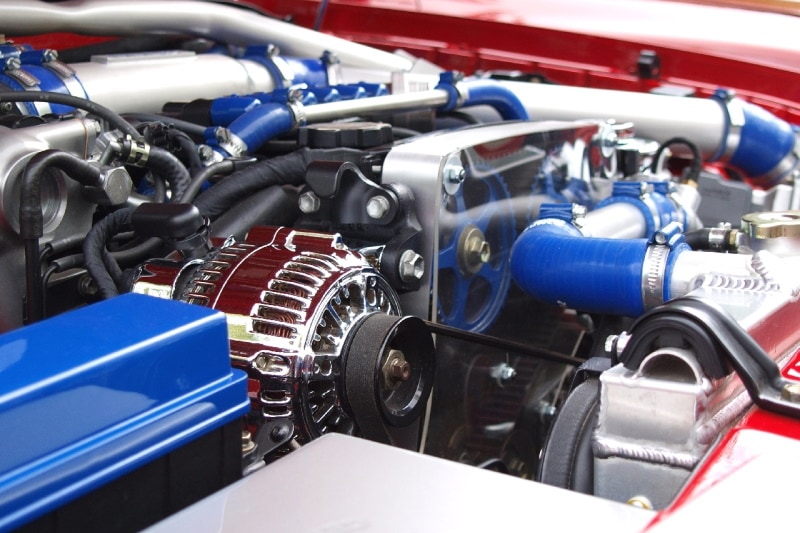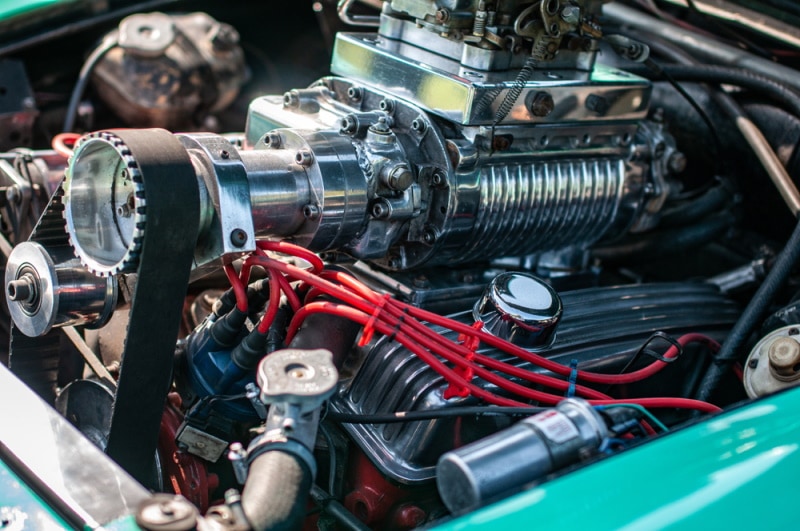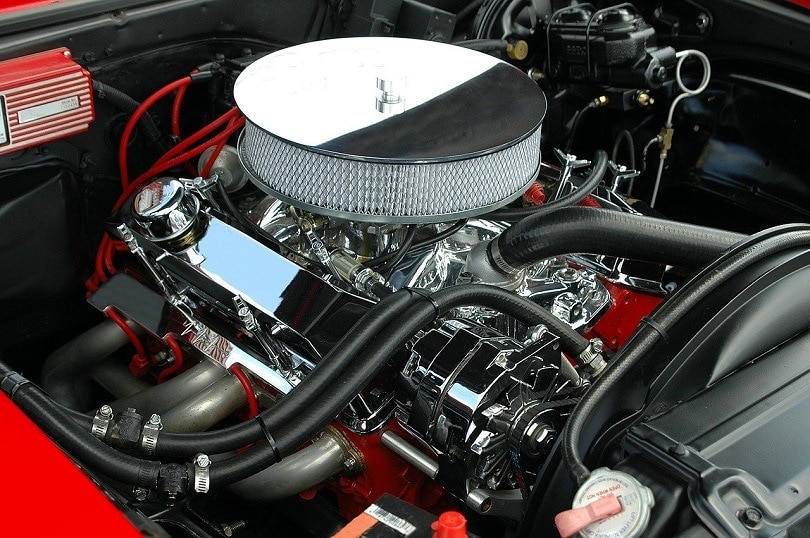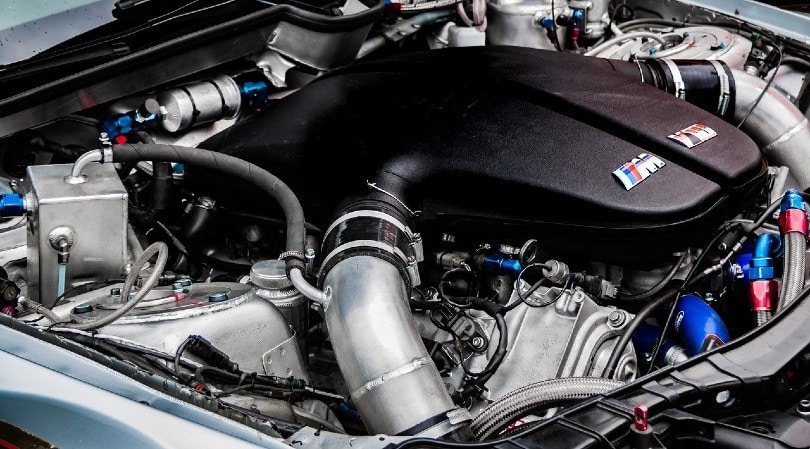How Does a Supercharger Work? What You Need to Know
-

- Last updated:

The combustion engine was invented by Etienne Lenoir back in 1863 and instantly took the world by storm. But for some, this one-cylinder gasoline engine didn’t have enough power.
The only way to increase the engine’s power was to increase its size or efficiency. The former wasn’t feasible because the engine would be too heavy and impractical, and the latter was difficult to achieve. As a result, many engineers began exploring other options for increasing power output.
One of these options was the supercharger, a technological marvel that could increase an engine’s power output by compressing air and forcing it into the combustion chamber. Superchargers have been around for over a century, but many people still don’t completely understand how they work or what they’re used for.
Today, we’ll take a closer look at superchargers, exploring the different types and how they work. Let’s dive straight into it.
How Do Superchargers Work?
A supercharger is a mechanical device that uses air compression to increase an engine’s power output. It consists of a compressor, a belt or gear system, and a turbine or impeller. When the compressor increases air pressure in the combustion chamber, it forces more fuel into the engine and generates more power.
The first supercharged engine was invented between 1848 and 18491 and was mainly used in aircraft engines. It wasn’t until the 1910s and 1920s that we started using superchargers in cars.
A supercharger’s job is to increase the power output of an engine by increasing the amount of air and fuel it can burn. This is done using a compressor, which draws in air from outside the engine and increases its pressure before sending it into the combustion chamber.
At the same time, a supercharger also has a turbine or impeller that spins at extremely high speeds, typically thousands of revolutions per minute (RPM). This turbine, in turn, is connected to the compressor via a belt or gear system.
As the engine runs and spins the supercharger’s turbine, it begins compressing the air within the compressor and forcing it into the combustion chamber at high pressure. The compressed air-fuel mixture then combusts and produces more energy than before, giving the engine more power.
What Are the Different Types of Superchargers?

There are several different types of superchargers, each with its own advantages and disadvantages. Here are some of the most common types of superchargers.
Roots Superchargers
Root superchargers are some of the oldest and most common types of superchargers. As their name implies, they feature two intermeshed rotors that resemble roots or front-type hair dryers in an 8-shaped chamber. These rotors are connected to a belt or gear system, which in turn is connected to the engine.
The rotors will catch a little bit of air, thanks to their shape, and convey it to the outlet. They work by passing the air back and forth through the chamber. Unlike other types of superchargers, root superchargers don’t compress air. Instead, they rely on the pressure differential of the inlet and outlet to create an influx of air into the engine.
As you’d expect, root superchargers are quite large, heavy, and require a lot of power. The rotors inside them also have moving parts that can sometimes wear down or break over time. However, they’re still commonly used today for low RPM applications because of their reliability and affordability.
Twin-Screw Superchargers
Twin-screw superchargers feature two co-axial, helical rotors that resemble screws or augers. As the screw rotors revolve through the housing, they draw in air from outside the engine and compress it before forcing it into the combustion chamber.
These superchargers don’t rely on differential pressure to work and can therefore be used at higher speeds. They’re also more efficient and generate less heat than the Roots supercharger, making them ideal for high-performance cars.
Centrifugal Supercharger
Centrifugal superchargers are the most common type of supercharger used today. They work by using high-speed rotors or impellers to draw air into the engine, much like a vacuum cleaner. As the centrifugal force increases at higher speeds, it forces more air into the combustion chamber and generates greater power output.
Centrifugal superchargers tend to be smaller and lighter than other types of superchargers, making them a popular choice for sports cars. However, they also require more power from the engine to run efficiently and can sometimes generate a lot of heat.
Electric Superchargers
Unlike the other types of superchargers, electric superchargers do not use a belt or gear system to draw in air from outside the engine. Instead, they rely on an electric motor and compressor to generate high-pressure air inside the combustion chamber.
Electric superchargers can be a good choice for vehicles that are powered by batteries or fuel cells since their energy source is already internal. However, they can sometimes be expensive and require a lot of power to run properly.
What Is the Difference Between Superchargers and Turbochargers?

Superchargers and turbochargers both use pressurized air to increase the power of an engine. The biggest difference is that superchargers are powered by a belt connected directly to the engine, while turbochargers rely on waste heat generated by the engine to spin their compressor.
While turbochargers are more efficient since they use the engine’s own power to run, superchargers are a more affordable and simpler option. Both can be used together in cars to increase power, throttle response, and fuel efficiency. In the end, it really just depends on what kind of vehicle you have and what performance adjustments you need.
Turbochargers vs. Superchargers: Which One Should You Choose?
Choosing between turbochargers and superchargers is a dilemma most gearheads face. On the one hand, superchargers are more affordable and easier to install. On the other hand, turbochargers tend to be more efficient and can provide a greater performance boost at higher speeds.
So which one should you choose?
Ultimately, it depends on your budget, performance goals, and the type of vehicle you have. If you’re looking for increased throttle response and power at lower speeds, superchargers may be a better option. But if you want to push your car to its limits, turbochargers may be the best choice.
Although turbochargers came later than superchargers, this doesn’t mean they’re instantly the better choice.
Can You Use Both a Turbocharger and a Supercharger?

Yes, you can use both a supercharger and a turbocharger in the same vehicle, though this is often more of a budget-based decision. Superchargers are more affordable, but you will likely get better performance results if you use a combination of both.
To start, you should focus on upgrading your engine and exhaust system to help support the added power. Then, you can install a supercharger and work on fine-tuning the system to get the best performance results possible.
With the right combination of both types of chargers, you’ll be able to boost your car’s performance and take it to new levels. Just be sure to do plenty of research and consult with a professional about the best way to install and use these devices for maximum results.
Advantages of a Supercharger
Superchargers offer a myriad of benefits. The following are some of them.
Zero Lag
Unlike turbochargers, superchargers provide instantaneous power, which means there is no lag time between pressing the gas and getting a speed boost. This makes it an excellent choice for performance vehicles that need quick acceleration.
Affordable and Easy to Install
Superchargers are often more affordable than turbochargers, and they can be easier to install since there is no need for complex piping or wastegate systems. This makes them a good choice for anyone who is on a budget or wants a simpler system.
Improves Your Vehicle’s Horsepower
Superchargers can significantly boost your vehicle’s horsepower, which is great for anyone who wants to quickly take their car for a quick race. They are also a good choice for those who want a more powerful engine without needing to modify their entire car or engine.
Can Boost at Low RPMs
A supercharger can also help provide more power at lower revs and rpm, which is perfect for driving in traffic or on a city street. This makes them an ideal choice for those who want to use their vehicle as a daily driver as well as a performance car.
Disadvantages of a Supercharger
Before installing a supercharger, the following are some drawbacks you need to be aware of.
They Require More Maintenance
Since superchargers are more complex than turbochargers, they require more maintenance. This can include replacing belts and lubricating the pulleys on a regular basis in order to keep them working properly and prevent overheating.
They are Not Very Efficient at Higher Speeds
While superchargers can provide a good boost of power at lower speeds and revs, they’re not as efficient at higher speeds. This means that you may get less of a performance boost if you do most of your driving on the highway or at very high speeds.
 FAQ on Superchargers
FAQ on Superchargers
Can You Use a Supercharger on a Motorcycle?
There’s no definitive answer to this question, as it will depend on a number of factors, including the make and model of your motorcycle, how powerful it is, and what type of supercharger you plan to use. To be on the safe side, we recommend consulting with a mechanic or technician before making any decisions about installing a super
How Often Do You Need to Change the Oil in a Supercharger?
Again, how often you oil your supercharger, depends on a couple of factors. These might include the type of supercharger you’re using, how old or well-maintained it is, and your specific driving habits. Generally speaking, most mechanics recommend changing your oil around once a year or every 10,000 miles. However, be sure to consult with a technician or mechanic for more precise recommendations.
Can I Install a Supercharger by Myself?
While it’s possible to install a supercharger on your own, we highly recommend consulting with a professional mechanic or technician before doing so. This way, you can be sure that you’re using the right tools and components for your specific vehicle, as well as following all necessary safety protocols.
What About Twin Turbos and Quad Turbos?
If you’re looking for even more power and performance from your vehicle, then twin or quad turbos may be the right choice. As the name implies, twin turbos are two turbochargers, and quad turbos are four turbochargers. The more turbochargers an engine has, the more boost the engine produces.
Final Thoughts
Now that you know how a supercharger works, we hope that you can comfortably decide whether you should get one for your car. Whether you’re looking to boost your power and performance or simply need a more efficient driving experience, choosing a supercharger can be an excellent option.
Be sure to consult a technician or mechanic before deciding on a supercharger or a turbocharger or a supercharger. That way, you can be sure of making the right choice for your vehicle’s specific needs.
- https://auto.howstuffworks.com/supercharger.htm
- https://www.eagleridgegm.com/what-is-a-supercharger-and-how-does-it-work/
- https://www.carthrottle.com/post/engineering-explained-the-pros-and-cons-of-turbochargers-vs-superchargers/
- https://www.tuev-nord.de/explore/en/remembers/a-brief-history-of-the-internal-combustion-engine/
- https://www.daleadams.com/blogs/news/who-invented-the-supercharger
Featured Image Credit: Jumpstory
Contents



